Related Research Articles
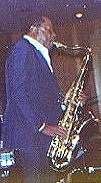
Edward F. Davis, known professionally as Eddie "Lockjaw" Davis, was an American jazz tenor saxophonist. It is unclear how he acquired the moniker "Lockjaw" : it is either said that it came from the title of a tune or from his way of biting hard on the saxophone mouthpiece. Other theories have been put forward.

Harry "Sweets" Edison was an American jazz trumpeter and a member of the Count Basie Orchestra. His most important contribution was as a Hollywood studio musician, whose muted trumpet can be heard backing singers, most notably Frank Sinatra.

Dot Records was an American record label founded by Randy Wood and Gene Nobles that was active between 1950 and 1978. The original headquarters of Dot Records were in Gallatin, Tennessee. In 1956, the company moved to Hollywood, California. In its early years, Dot specialized in artists from Tennessee. Then it branched out to include musicians from across the U.S. It recorded country music, rhythm and blues, polkas, waltzes, gospel, rockabilly, pop, and early rock and roll. After moving to Hollywood, Dot Records bought many recordings by small local independent labels and issued them nationally. In 1957, Wood sold the label to Paramount Pictures, but remained in charge until 1967, when he departed to join Lawrence Welk in the formation of Ranwood Records. In 1968, the label was acquired as part of the acquisition of Paramount by Gulf+Western, which transitioned it to exclusively recording country music and eventually placed it under the management of Famous Music in 1971. Gulf+Western sold its labels to ABC in 1974, after which Dot was renamed to ABC-Dot Records before closing in 1978.

Albert George Hibbler was an American baritone vocalist, who sang with Duke Ellington's orchestra before having several pop hits as a solo artist. Some of Hibbler's singing is classified as rhythm and blues, but he is best seen as a bridge between R&B and traditional pop music. According to one authority, "Hibbler cannot be regarded as a jazz singer but as an exceptionally good interpreter of twentieth-century popular songs who happened to work with some of the best jazz musicians of the time."

Charles James Shavers was an American jazz trumpeter who played with Dizzy Gillespie, Nat King Cole, Roy Eldridge, Johnny Dodds, Jimmie Noone, Sidney Bechet, Midge Williams, Tommy Dorsey, and Billie Holiday. He was also an arranger and composer, and one of his compositions, "Undecided", is a jazz standard.

Urban Clifford "Urbie" Green was an American jazz trombonist who toured with Woody Herman, Gene Krupa, Jan Savitt, and Frankie Carle. He played on over 250 recordings and released more than two dozen albums as a soloist. He was inducted into the Alabama Jazz Hall of Fame in 1995.
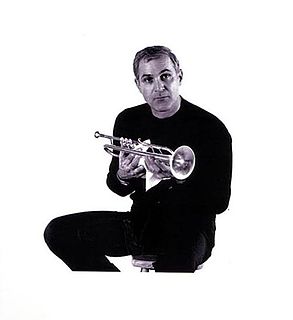
Pete Candoli was an American jazz trumpeter. He played with the big bands of Woody Herman and Stan Kenton and worked in the studios of the recording and television industries.
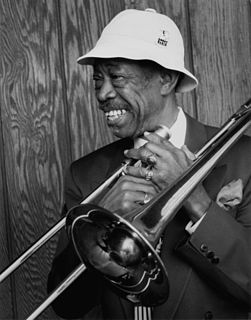
Al Grey was an American jazz trombonist who was a member of the Count Basie orchestra. He was known for his plunger mute technique and wrote an instructional book in 1987 called Plunger Techniques.

The Count Basie Orchestra is a 16 to 18 piece big band, one of the most prominent jazz performing groups of the swing era, founded by Count Basie in 1935 and recording regularly from 1936. Despite a brief disbandment at the beginning of the 1950s, the band survived long past the Big Band era itself and the death of Basie in 1984. It continues under the direction of trumpeter Scotty Barnhart.
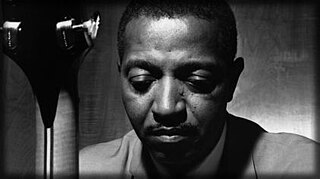
Frederick William Green was an American swing jazz guitarist who played rhythm guitar with the Count Basie Orchestra for almost fifty years.
Marshal Walton Royal Jr. was an American jazz alto saxophonist and clarinetist best known for his work with Count Basie, with whose band he played for nearly twenty years.
Charles Baker Fowlkes was an American baritone saxophonist who was a member of the Count Basie Orchestra for over twenty-five years.
"Don't Get Around Much Anymore" is a jazz standard written by composer Duke Ellington. The song was originally entitled "Never No Lament" and was first recorded by Duke Ellington and his orchestra on May 4, 1940. "Don't Get Around Much Anymore" quickly became a hit after Bob Russell wrote its lyrics in 1942.
"Blue Hawaii" is a popular song written by Leo Robin and Ralph Rainger for the 1937 Paramount Pictures film Waikiki Wedding, starring Bing Crosby and Shirley Ross. Crosby recorded a version with backing by Lani McIntyre and His Hawaiians, which was released in 1937 as the B-side of "Sweet Leilani." This reached the No. 5 spot in the charts of the day during a 13-week-stay

Joseph Barry Galbraith was an American jazz guitarist.
Eric Dixon was an American jazz tenor saxophonist, flautist, composer, and arranger.

George Thomas Cohn, known professionally as Sonny Cohn, was an American jazz trumpeter whose career spanned over six decades. After working for fifteen years with Red Saunders (1945–1960), Cohn went on to spend another twenty four years in Count Basie's trumpet section (1960–1984).
Blue and Sentimental is a song written by Count Basie, Jerry Livingston, and Mack David. It was written in 1938 and recorded by the Count Basie Orchestra on 6 June that year.
William Henry Hughes was an American jazz trombonist and bandleader. He spent most of his career with the Count Basie Orchestra and was the director of that ensemble until September 2010.
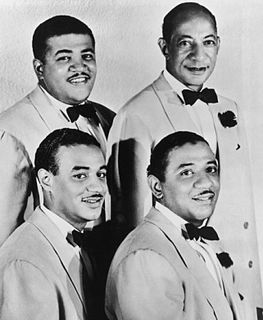
The Mills Brothers, sometimes billed the Four Mills Brothers, and originally known as the Four Kings of Harmony, were an American jazz and traditional pop vocal quartet who made more than 2,000 recordings that sold more than 50 million copies and garnered at least three dozen gold records.
References
- 1 2 3 4 "The Mills Brothers Top Songs / Chart Singles Discography". Music VF. Retrieved November 21, 2022.
- ↑ Whitburn, Joel (2015). The Comparison Book Billboard/Cash Box/Record World 1954-1982. Sheridan Books. ISBN 978-0-89820-213-7.
- ↑ "MILLS BROTHERS - full Official Chart History". Official Charts Company . Retrieved November 21, 2022.